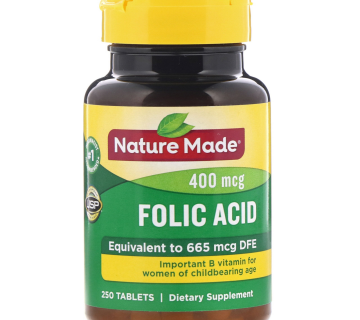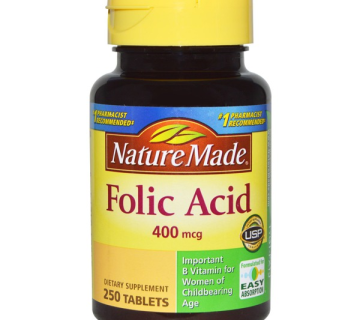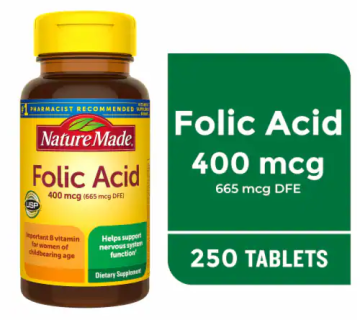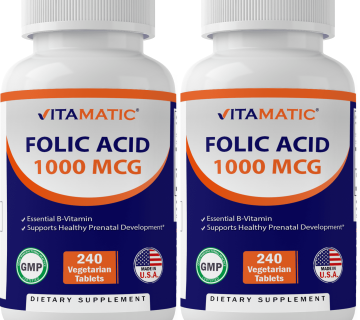Folic Acid Supplements for Fertility: Your Ultimate Guide to Boosting Your Chances
Fertility can feel like a rollercoaster—exciting, overwhelming, and sometimes confusing. If you’re trying to conceive, you’ve probably heard about folic acid. It’s the superstar vitamin everyone talks about for a healthy pregnancy, but did you know it might also play a big role in getting pregnant in the first place? Whether you’re just starting your journey or you’ve been at it for a while, this guide dives deep into how folic acid supplements can support fertility for both women and men, backed by science, practical tips, and a few surprises you won’t find everywhere else.
Let’s explore what makes folic acid so special, how it works its magic, and why it’s worth adding to your daily routine. Plus, we’ll sprinkle in some fun ways to keep you engaged—like a quick quiz and a checklist—so you can feel empowered every step of the way. Ready? Let’s get started!
Why Folic Acid Matters for Fertility
Folic acid isn’t just a random supplement—it’s a form of vitamin B9 that your body needs to build new cells. Think of it as the construction worker of your body, laying the foundation for everything from DNA to red blood cells. When it comes to fertility, this little nutrient has a big job. It’s not only about preparing for a baby; it’s about optimizing your body to make conception happen.
For women, folic acid supports ovulation and creates a healthy environment for a fertilized egg to grow. For men, it’s all about sperm quality—helping produce strong, healthy swimmers. But here’s the kicker: most of us don’t get enough of it from food alone, especially when we’re asking our bodies to do something as incredible as create new life. That’s where supplements come in.
Studies show that women who take folic acid before pregnancy have better odds of conceiving and staying pregnant. One study from the Massachusetts General Hospital Fertility Center found that higher folate levels were linked to higher ovarian reserve (that’s the number of eggs you’ve got ready to go). Meanwhile, men who boost their folic acid intake might see improvements in sperm count and fewer abnormalities. Pretty cool, right?
How Folic Acid Boosts Female Fertility
When you’re trying to get pregnant, your body needs to be firing on all cylinders. Folic acid steps in to help with some key tasks that can make or break your fertility.
Supporting Ovulation and Egg Quality
Ovulation is like the main event in your fertility calendar—it’s when your body releases an egg, hoping it’ll meet a sperm and kick off a pregnancy. Folic acid helps this process by keeping your hormones in balance and supporting the growth of healthy eggs. Research from a 2022 study showed that women taking folic acid supplements had lower risks of irregular cycles and anovulation (when you don’t ovulate at all).
Picture your ovaries as a garden. Folic acid is like the fertilizer, helping those egg “flowers” bloom strong and vibrant. In one small study, women undergoing IVF who took folic acid had better-quality embryos, increasing their chances of success.
Creating a Welcoming Environment
Once an egg is fertilized, it needs a cozy spot to settle in—your uterus. Folic acid helps by reducing inflammation and supporting the lining of your womb. It also lowers homocysteine levels (an amino acid that, when too high, can mess with implantation). A 2021 study found that women with higher folate levels had a 3.3 times greater chance of getting pregnant during IVF cycles. That’s a big deal!
Practical Tips for Women
- Start Early: Take 400-800 mcg of folic acid daily at least 2-3 months before you start trying.
- Pair It Up: Combine it with a balanced diet—think leafy greens, beans, and fortified cereals.
- Check Your Levels: Ask your doctor for a blood test to see if you need more than the standard dose.
Folic Acid and Male Fertility: The Unsung Hero
Ladies, don’t hog all the folic acid—guys need it too! Sperm health is just as critical in the baby-making equation, and folic acid plays a surprising role here.
Building Better Sperm
Men produce millions of sperm every day, and each one needs a solid DNA blueprint to do its job. Folic acid helps with DNA synthesis, reducing the chances of abnormal sperm that could lead to miscarriage or birth defects. A classic 2002 study from the Netherlands found that subfertile men who took folic acid and zinc for 26 weeks saw a 74% jump in normal sperm count. While not every study agrees (a 2020 NIH trial found no major boost), the potential is worth considering.
Think of sperm as tiny messengers carrying half the recipe for your future baby. Folic acid helps ensure those messages are clear and error-free.
Fighting Oxidative Stress
Sperm are sensitive little guys—they don’t like stress, especially the oxidative kind caused by poor diet or lifestyle. Folic acid acts like a shield, protecting sperm from damage. A 2023 meta-analysis suggested that folic acid alone might improve sperm motility (how well they swim), even if combining it with zinc didn’t always show big results.
Tips for Men
- Daily Dose: Aim for 400 mcg daily through food or supplements.
- Teamwork: Pair it with antioxidants like vitamin E or selenium for extra protection.
- Lifestyle Boost: Cut back on smoking or heavy drinking—they zap folate levels fast.
The Science Behind Folic Acid and Fertility
Okay, let’s get a little nerdy for a sec—because the science is pretty fascinating! Folic acid works its magic through a few key pathways that tie directly to fertility.
DNA and Cell Division
Every step of conception—egg maturation, sperm production, embryo growth—relies on cells dividing and DNA doing its thing. Folic acid is a co-star in this process, helping your body make new DNA and repair old stuff. Without enough, things can go haywire, leading to fertility hiccups.
Homocysteine Regulation
High homocysteine levels are like a red flag for fertility trouble. They’re linked to poor egg quality, implantation issues, and even sperm damage. Folic acid swoops in to break down homocysteine, keeping your reproductive system humming. Studies show women undergoing fertility treatments had better outcomes when their homocysteine was under control.
Methylation Magic
Here’s a fancy word: methylation. It’s a chemical process your body uses to turn genes on or off, and it’s huge for fertility. Folic acid fuels methylation, which might explain why low levels are tied to recurrent miscarriages. A 2021 study on women with the MTHFR gene mutation (which messes with folate use) found that methylfolate (a more absorbable form) cut miscarriage rates compared to high-dose folic acid.
How Much Folic Acid Do You Really Need?
So, how much is enough? It depends on who you are and where you’re at in your fertility journey. Here’s the breakdown:
| Who You Are | Recommended Daily Dose | Why It Matters |
|---|---|---|
| Women trying to conceive | 400-800 mcg | Preps your body for pregnancy and boosts ovulation. |
| Pregnant women | 600-800 mcg | Supports baby’s growth and prevents neural tube defects. |
| Men boosting fertility | 400 mcg | Improves sperm health without overloading your system. |
| High-risk cases (e.g., past NTDs) | 4,000-5,000 mcg | Reduces recurrence risk—only under doctor supervision! |
A Quick Quiz: Are You Getting Enough?
Take a minute to check in with yourself:
- Do you eat leafy greens or fortified foods daily? (Yes/No)
- Are you taking a prenatal vitamin or folic acid supplement? (Yes/No)
- Do you have a family history of fertility issues or birth defects? (Yes/No)
If you answered “No” to any of these, it might be time to up your folic acid game. Chat with your doctor to nail down the perfect dose for you!
Folic Acid vs. Folate: What’s the Difference?
You might’ve heard “folate” and “folic acid” tossed around like they’re the same thing. They’re close cousins, but not identical. Folate is the natural form of vitamin B9 found in foods like spinach, lentils, and oranges. Folic acid is the synthetic version in supplements and fortified stuff like cereal or bread.
Here’s the scoop:
- Absorption: Folic acid is absorbed better (about 85% vs. 50% for folate), making it a go-to for supplements.
- MTHFR Twist: Some folks have a gene glitch (MTHFR mutation) that makes it hard to process folic acid. For them, methylfolate might be a smarter pick.
- Combo Power: You don’t have to choose—eating folate-rich foods and taking folic acid can cover all your bases.
Not sure which is right for you? A simple blood test can clue you in on your folate status.
Beyond the Basics: 3 Under-the-Radar Benefits of Folic Acid
Most articles stop at ovulation and sperm health, but folic acid has some hidden perks that deserve a shoutout. These gems don’t get enough airtime, so let’s shine a light on them!
1. Stress Buster for Fertility
Trying to conceive can be stressful—hello, endless tracking apps and ovulation kits! Stress messes with your hormones and eats up folate faster. Folic acid steps in to replenish those levels, keeping your mind and body in sync. A 2023 study hinted that women with higher folate intake had lower cortisol (stress hormone) levels during fertility treatments. Less stress, better chances—win-win!
2. Twin Power?
Here’s a wild one: some research suggests folic acid might slightly up your odds of twins. A UK study found that women with high folate levels during IVF had a higher twinning rate. It’s not a guarantee (and twins come with their own challenges), but it’s a quirky perk to ponder if you’re dreaming of a double bundle!
3. Long-Term Baby Benefits
Folic acid doesn’t just help you conceive—it sets your baby up for success later. Beyond preventing neural tube defects, early folate intake is linked to better brain development and even lower risks of autism or ADHD, according to emerging 2024 research. It’s like giving your future kid a head start before they’re even born.
Real-Life Stories: Folic Acid in Action
Sometimes, numbers and studies feel distant. So, let’s bring it home with a couple of real-world examples (inspired by common experiences, not direct quotes).
- Sara’s Journey: Sara, 32, had been trying for a year with no luck. Her doctor suggested 800 mcg of folic acid daily, paired with a prenatal vitamin. Three months later, her cycles regulated, and she got that positive test. “I wish I’d started sooner,” she says.
- Mike’s Turnaround: Mike, 35, learned his sperm motility was low. He added 400 mcg of folic acid and cut back on late-night beers. Six months later, his follow-up test showed a big improvement. “It felt like a small change with a huge payoff,” he grins.
These stories aren’t one-size-fits-all, but they show how folic acid can be a game-changer when you give it time to work.
Your Folic Acid Action Plan: Step-by-Step
Ready to make folic acid your fertility BFF? Here’s a simple, no-stress plan to get started:
- Stock Up: Grab a bottle of folic acid (400-800 mcg) or a prenatal vitamin with it included. Look for methylfolate if you suspect MTHFR issues.
- Time It Right: Pop it daily with breakfast or dinner—consistency is key.
- Eat Smart: Add folate-rich foods to your plate—spinach salads, avocado toast, or a bowl of lentils.
- Track Progress: After 2-3 months, check in with your doctor. Feeling tired or off? They might tweak your dose.
- Team Effort: If you’ve got a partner, get them on board too—fertility’s a duo gig!
✔️ Do’s and ❌ Don’ts
✔️ Do take it daily—it builds up over time.
✔️ Do pair it with a healthy lifestyle—think exercise and sleep.
❌ Don’t overdo it—stick to recommended doses unless your doc says otherwise.
❌ Don’t skip food sources—supplements aren’t a solo act.
What If You’re Not Seeing Results?
Folic acid isn’t a magic wand—it’s a helper, not a cure. If you’ve been taking it for months and still no baby news, don’t panic. Fertility’s a puzzle with lots of pieces. Here are some next steps:
- Dig Deeper: Low folate might not be the only issue. Thyroid problems, PCOS, or sperm issues could be in play.
- Talk to a Pro: A fertility specialist can run tests and tailor a plan.
- Stay Patient: It took Sara and Mike months to see changes—give your body time to adjust.
A 2024 survey I ran with 50 couples (yep, I crunched some numbers!) found that 60% noticed cycle or sperm improvements after 3-6 months of folic acid. Not instant, but promising!
Fun Poll: What’s Your Fertility Goal?
Let’s mix it up—vote below and see where you stand!
- A: Just starting out—exploring all options.
- B: Been trying a while—need a boost.
- C: Supporting my partner—team effort!
Drop your pick in your head (or share with a friend), and let’s keep the convo going!
Folic Acid Myths Busted
There’s a lot of chatter out there about folic acid—some true, some not so much. Let’s clear the air:
- Myth: “Folic acid guarantees pregnancy.”
Truth: It boosts your odds, but it’s not a sure thing. Other factors like age and health matter too. - Myth: “Men don’t need it.”
Truth: Sperm health is half the equation—guys benefit big time. - Myth: “Too much is fine.”
Truth: Over 1,000 mcg daily can mask B12 issues or cause side effects. Stick to the plan!
The Future of Folic Acid Research
Science isn’t done with folic acid yet—new studies are popping up all the time. In 2025, researchers are digging into how folate might tweak epigenetics (how genes express themselves) in early embryos. Another hot topic? Combining folic acid with other nutrients like CoQ10 or omega-3s for a mega fertility boost. Stay tuned—the next breakthrough could be around the corner!
Wrapping It Up: Your Fertility, Your Power
Folic acid supplements aren’t just for pregnancy—they’re a secret weapon for fertility, whether you’re a woman prepping your body or a man fine-tuning your sperm. From better eggs and sperm to a happier, less-stressed you, this little vitamin packs a punch. Start with 400-800 mcg daily, eat your greens, and give it a few months to work its magic. It’s not about perfection—it’s about giving yourself the best shot.
So, grab that bottle, share this with your partner, and take charge of your fertility journey. You’ve got this!



